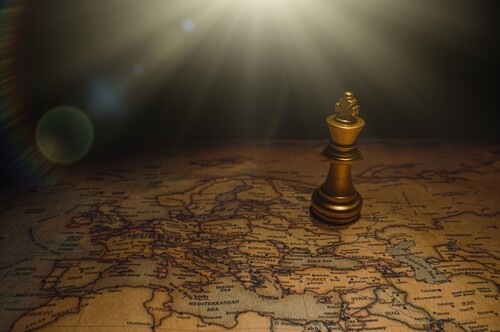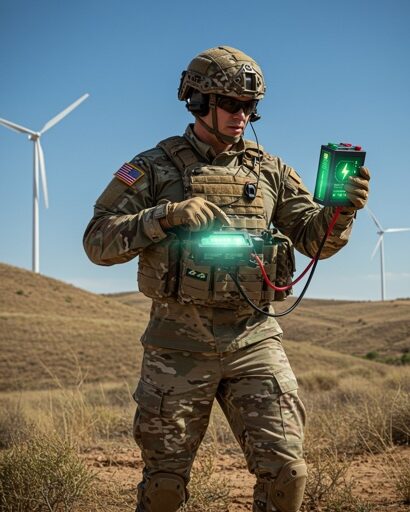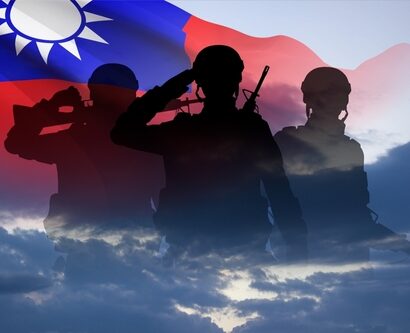Abstract: The global West, and Europe in particular, are beset by the consequences of self-doubt and the vagaries of the peace dividend. These manifest in Russian intransigence and the less-than-resolute response to Russian aggression in Ukraine. However, this need not be the case. Russia has been emboldened to act recklessly because it seems that nobody will stand up to it. However, as recent history shows, when Russian weakness is exposed, Russia frequently falls in line; thus, Russia can be restrained. The West can do this by arming Ukraine with the tools to win and by reinvigorating Europe’s defence industrial capacity to signal to Russia that it is not the bear it wants the world to think it is.
Problem statement: How do Europe’s unfounded fears of Russia enable Russian misbehaviour on the world stage?
So what?: The West, and Europe in particular, has the hard power, both human and material, to restrain Russia. It just needs to find the will to do so.

Time for A Hard Look at Hard Power?
Since Russia’s full-scale invasion of Ukraine in February 2024, the global West, and Europe in particular, has found itself caught short, both psychologically and physically. In the first instance, many Europeans hoped that there would be no war in Ukraine and were stunned when it came. Immediately after Russia launched its invasion, there was a cautious knee-jerk reaction amongst most Europeans to the fact that something needed to be done. And whilst Europe’s response was commendable, it is clear that there has been a disconnect between leaders and what actually needs to be done. In the physical dimension, Europe is somewhat bereft of excess military capacity or—worse—unwilling to part with what it has. We can see this in the hesitance to provide Ukraine with modern equipment, with many states initially offering Soviet-era equipment that was pulled from deep storage.
Immediately after Russia launched its invasion, there was a cautious knee-jerk reaction amongst most Europeans to the fact that something needed to be done.
European attempts to arm Ukraine with modern equipment have fallen victim to the vagaries of international politics—Swiss and German reluctance to provide arms, for example—and the fallacy of the “peace dividend”. Ukraine has been sacrificed upon a desire not to provoke Russia and by a dearth of equipment, that latter being compounded by the idea that such equipment is needed for contingency elsewhere in Europe. The war in Ukraine has made a mockery of this latter point, as Ukraine is admirably dealing with a disadvantage in numbers without the plethora of air power options that dramatically increase the combat power of Western forces. Moreover, should it come to pass that other contingencies in Europe require Europeans to pull on their war stores, then in all likelihood, they will have failed not to provoke or restrain Russia.
Should Europeans wish to prevent Russian expansion or other military threats to the continent, they need to take a “hard look at hard power” to borrow a phrase.[1] They must also develop a willingness to arm and, more crucially, maintain adequate armed forces to underwrite their security. Sadly, Radislaw Sikorski’s assertion at the UN that European states only started arming after Russia invaded its neighbours, is not something we should applaud—though his direct rebuttal of Russian lies is praiseworthy—it is indicative of European states closing the stable door after the horse had bolted.[2]
Prohibitive Politics
With Russia’s invasion of Ukraine, there was an initial outpouring of international disdain for Russia and solidarity for Ukraine. Yet, despite the general mood, many European states have found themselves in discord over how to proceed practically in the two years since. Some states—the U.S., the UK, Denmark, and Poland, for example—acted with alacrity and provided vast quantities of small arms and other equipment to Ukraine.[3] This aid was no doubt vital to sustaining the early resistance. However, many states prevaricated, notably Germany and France. Others—Austria, Cyprus, Ireland, Malta and Switzerland—engaged in what might be called “Operation Ostrich”, burying their heads in the sand to avoid both meaningful action and deliberate re-thinking of policies of neutrality that allow Russians to kill and Ukrainians to die. Notably egregious has been Switzerland’s unwillingness to allow states to supply Swiss-made air defence ammunition to Ukraine whilst Russia was bombarding Ukraine’s civil infrastructure with impunity.[4] Whilst one could argue that the Swiss refusal to allow the dispatch of tanks might be sensible in terms of neutrality, its refusal to allow the Ukrainians to protect power and water infrastructure in winter smacks of moral indifference.
Notably egregious has been Switzerland’s unwillingness to allow states to supply Swiss-made air defence ammunition to Ukraine whilst Russia was bombarding Ukraine’s civil infrastructure with impunity.
Cumulatively, these variations in policy have left the response to Russia disjointed and frail. Discord in the West has exposed cleavage points that Russia has either attempted to or successfully managed to exploit. These cleavages include Viktor Orban’s outright refusal to help Ukraine—his undermining of European and NATO processes—and Robert Fico’s flip-flopping on Slovakian aid to Ukraine.[5]
Due to its multifaceted makeup, Europe has, in many respects, lost a degree of narrative control regarding Russia. Politically, Europeans see themselves as lacking strength while viewing Russia as 10 feet tall. This has led to a fear of Russia instead of managing it.
When compared to Hungary, Austria, or Germany alone, Russia might be 10 feet tall, but that being said, Hungary, Austria, and Germany are not in a situation to face Russia alone—they have allies. European states need to see that they are not alone and that, cumulatively, they can deal with Russia, not just as equals, but from a position of strength. European leaders, influencers and citizens need to reinforce this message. Otherwise, Russian propaganda will continue to poison European politics.[6]
The Disabling Dividend
When historians look back on the post-Cold War world, they may consider Europe’s inability to incorporate Russia as its biggest failure. However, they may look at the simultaneous voluntary disarming of the continent—the “Peace Dividend—as something more scandalous.
The scale of Europe’s decline in defence capacity is immense. One can see this in the air and tank fleets of European states as well as the dwindling small arms manufacturing industry. To contextualise both the depth of decline and the state of unreadiness in Europe to face conventional challenges, we can look at Europe’s main battle tank (MBT) fleet. For example, the West German Bundeswehr fielded 7,000 MBTs in the 1980s. In contrast, by 2017, the entirety of the EU 28—including unified Germany—fielded less than 5,000.[7] This is a surreal loss of capability for countering a threat that, as current events have shown, never really went away.
The West German Bundeswehr fielded 7,000 MBTs in the 1980s. In contrast, by 2017, the entirety of the EU 28—including unified Germany—fielded less than 5,000.
However, missing from these figures is not only the obvious loss of production and maintenance capacity but also a loss of innovation. Today, the most common tank in European service is the Rheinmetall Leopard 2—a tank which first entered service in 1979. This 45-year-old tank will likely remain in service for many years to come. The longevity of the Leopard 2 is more remarkable given the fact that it followed its predecessor into service within 14 years. This is a timescale unheard of in a post-Cold War Europe where defence spending has been in constant decline.[8]
At present, Leopard 2 is foundational to the future European Main Ground Combat System (MGCS), a hybrid tank derided as a “Powerpoint Panzer”.[9] As currently configured, this system is based on a Leopard 2 chassis and a French Leclerc turret. This recycling of previous systems smacks of both a lack of imagination and a dearth of political will to actually innovate. Worse still, even though the system will be based on existing technology, MGCS will enter service—if all goes well—between 2035-2040, at a time when the surviving cohort of original Leopard 2 crews will be in their late 70s or early 80s—this is progress at a glacial speed. This cannot be deemed acceptable at a time when large-scale conventional war rages in Europe and where one of the belligerents makes constant threats to Europe.
Whilst it may be possible to argue that due to their industrial and technological complexity, MBTs are a poor example of the decline of European defence capacity (after all, not every country can make them), we must ask what these systems represent. In a European industrial policy sense, they represent failure. MGCS is a collaboration of the two largest economies in the EU, and it is a project shrouded in doubt. Elsewhere, Britain, supposedly Europe’s most pro-defence country, is in the process of “building” Challenger 3, which will recycle parts from existing Challenger 2 tanks, of which 148 are expected to enter service between 2027 and 2030.[10]
Beyond the European industrial-political sense, tanks and the meaningful ability to produce them represent technological prowess: the modern tank is not merely a gun on tracks; it is an integrated system of systems designed to protect friends and destroy enemies —and do so efficiently in concert with other systems. They also serve as a signal that a state is serious about defending itself and that it will make any attempts at aggression costly. Furthermore, suppose tank production is organic/native and efficient. In that case, it signals that a state is somewhat competent and thus likely capable of inflicting significant costs for malfeasance.
Moving away from the industrial complexity of main battle tanks, the decline of European defence can also be seen in the areas of small arms and artillery ammunition. For example, in the 1980s, both Britain and France manufactured innovative, unique assault rifles tailored to their national specifics. Today, neither country manufactures this class of weapon. France has adopted the German HK 416FR as its replacement for FAMAS, whilst Britain, now outside the EU, is—in limited quantities—replacing British-made rifles with those made in the U.S.[11] Considering the British Army’s Project Grayburn has shortlisted several US manufacturers, there could be a wholesale replacement of a European rifle with an American-designed and manufactured one.[12] The decline of European arms production capability has come at a significant cost to Europe’s ability to deter aggression on its frontiers. At a basic level, European states are struggling to meet “peacetime” needs whilst enabling Ukraine to, at the very least, hold the line.
The decline of European arms production capability has come at a significant cost to Europe’s ability to deter aggression on its frontiers.
The paucity of European reserves has left European states scrambling to the U.S., South Korea, and Israel for arms and ammunition that, at one point, were made in vast quantities in Europe. We can see this well in France’s inability to provide Denmark with a mere 19 Ceasar self-propelled howitzers to replace the 19—brand new, one might add—examples that Denmark sent to Ukraine.[13] Upon transfer, Denmark learned that Next, France’s state-owned defence contractor, would not be able to supply a replacement set in adequate time, thus compelling Denmark to seek replacement artillery systems from Israel—a country of 7 million.[14]
This means that European taxes are not being used to pay European workers for European services and European goods; what’s more, as the Danish case shows, European taxpayers are paying a premium to non-EU states for services that should be available in the world’s second-largest economy.[15] Instead, these taxes and the opportunity cost they represent are fleeing Europe to enhance the economy and the defence capacity of countries far away—countries that are unlikely to have to deal militarily with a revanchist Russia. Europeans need to address this trend and spend European money on European goods in Europe to enhance European security.
What We Must Do: Stand Tall and Stand Fast
The Russian elite’s adoption of the Russkiy Mir philosophy demonstrates that it has openly expressed a desire to live in an imagined past.[16] Moreover, as this past is imbued with irrepressible imperialism, it is incumbent upon European decision-makers to ensure that Europe prepares to meet Russian threats beyond Ukraine. European leaders must take charge of these preparations, as it has become clear that, whilst the U.S. remains a relatively close ally, the persistence of Trumpism also makes the U.S. unreliable. Europe will be fine with its reliance on the U.S. until it is not. As such, Europeans cannot be Nicholas Nassim-Taleb’s turkeys who are joyously happy all the way to Thanksgiving.[17] Because, if it comes, Europe may have nothing to give thanks for.
To this end, the states—and, more importantly, the citizens—of the EU must start thinking seriously about how Europe can be defended without the support of the U.S. Fortunately, in terms of raw power, EU states possess a cumulate qualitative advantage in equipment and in the levels of military training. However, there is a lack of unified direction regarding what Europe is willing to do or how far we will go to defend our way of life. A decision has to be taken, and, as Trump’s willingness to throw Europe to the dogs shows, it has to be taken fast.
In terms of raw power, EU states possess a cumulate qualitative advantage in equipment and in the levels of military training.
Whilst one could argue that Europe must be prudent in not provoking Russia, this view is somewhat misleading. Putin, by nature, is something of a cautious coward.[18] One can see this in his refusal to take any meaningful responsibility for his decisions, be they the Russian COVID-19 response,[19] his refusal to visit the fronts in Ukraine, or his unwillingness to be seen with either the Russian people or soldiers being sent to slaughter in Ukraine—nevermind his comically long table.[20] Furthermore, the West can see that when pushed back, Putin folds.
Putin’s willingness to fold has been amply demonstrated in Syria, with Türkiye’s downing of a Su-24, and the U.S. annihilation of a Wagner Group column go unpunished.[21] The same cowardice was displayed when Finland and Sweden defied Russia and opted to join NATO. Putin and his acolytes made many veiled threats to these countries in the run-up to accession.[22] Yet, once the Finns and the Swedes disregarded Russian threats, Russia’s hardline softened.[23] Whilst Putin’s Russia is dangerous, it is not a great power, and any abundance of caution shown by Europe merely serves to inflate the Russian ego and embolden egregious actions.
Compounding Europe’s security situation is a possible Trump return to office; in this case, there may be no more US aid for Ukraine. This would severely blunt Ukraine’s ability to defend itself against Russia’s barbarism and would signal to Russia and Putin that the costs of interfering or of action in Europe have dropped significantly. Furthermore, whilst Trump may not be able to abandon NATO outright, he could sow chaos and discord and render it ineffective. Thus, Europe may have a limited time horizon in which to pre-empt this threat and undermine an already emboldened Russia.
Conclusion
Europe is beset by political partisanship and a paucity of arms. However, should European leaders collectively address these concerns, Europe will be in a position to address the threats posed by Russia—and to do so with or without the U.S. This will no doubt come with practical and political costs. However, as the peace dividend and the butchery currently underway in Ukraine show, short-termism is the more costly option. Combine short-term thinking and a potential future Trump 2.0, and the outcomes could be disastrous. Thus, it is evident that citizens and policy-makers must move the cost-benefit needle towards greater self-reliance and willingness to be bold in defence and security.
Europe is beset by political partisanship and a paucity of arms.
Europe must demonstrate that it is not a maiden in distress. Leaders need to be more Kallas and Lipavsky and less Scholtz and Varadkar, and leaders like Fico and Orban need to be publicly and politically pilloried for undermining Europe.
Finally, European citizens must make their leaders aware that it is a failure of leadership to behave in a manner that suggests Europe is at the mercy of Russia—because it is not. Given Putin’s predilection for cowardice, it is clear that if Europe stands up, Russia will sit down.
Dermot Nolan holds Master’s Degrees in International Relations and International Security (from Rijksuniversiteit Groningen, the Netherlands) and Military History and Strategic Studies (from the National University of Ireland, Maynooth). Additionally, he served 12 years in the Reserve Defence Forces Ireland, where he served in the Artillery Corps. He has research interests in Cold War History, Land Warfare, and Nuclear Deterrence. The views contained in this article are the author’s alone.
[1] Gary J. Schmitt, ed, A Hard Look at Hard Power, (Washington, 2020). Available at: https://press.armywarcollege.edu/cgi/viewcontent.cgi?article=1920&context=monographs.
[2] Ministry of Foreign Affairs Republic of Poland, ‘Minister Radosław Sikorski delivers speech at the UN Security Council’, (February 23, 2024), https://www.gov.pl/web/diplomacy/minister-radoslaw-sikorski-deliveres-speech-at-the-un-security-council.
[4] Swiss Parliament Votes To Block Indirect Arms Exports To Ukraine, RFERL, (June 02, 2023), https://www.rferl.org/a/swiss-parliament-blocks-arms-exports-ukraine/32440097.html.
[5] Tom Nicholson, Slovakia enables arms exports to Ukraine as Fico completes backflip, Politico, (January 16, 2024), https://www.politico.eu/article/in-post-election-reversal-slovakia-enables-weapons-exports-to-ukrainef-fico/.
[6] Mark Galeotti, Time to Exist and Resist: The European Union and Russian Political War, Czech Institute for International Relations, (March 2020), https://www.iir.cz/en/time-to-exist-and-resist-the-european-union-and-russian-political-war.
[7] For the size of the German tank fleet, see: Bundeswehr, “The History of the German Army,” https://www.bundeswehr.de/en/about-bundeswehr/history/history-german-army. For the size of Europe’s current fleet, see: European Defence Agency, Optimizing Europe’s Main Battle Tank Capabilities, in European Defence Matters, no14 (2017), https://eda.europa.eu/webzine/issue14/in-the-field/optimizing-europe-s-main-battle-tank-capabilities.
[8] Margaryta Khvostova and Dmytro Kryvosheiev, The art of defence: Why the West should help Ukraine grow its military industry’ European Council on Foreign Relations, October 26 2023, https://ecfr.eu/article/the-art-of-defence-why-the-west-should-help-ukraine-grow-its-military-industry/; Gideon Rachman, Disarmed Europe will face the world alone, Financial Times, Feburary 18 2013, https://www.ft.com/content/b4c057d0-79be-11e2-9015-00144feabdc0; Rachman’s article is an interesting read from the perspective of opportunities lost.
[9] Sebastian Sprenger, Vivienne Machi, Andrew Chuter and Jaroslaw Adamowski, Europe’s PowerPoint panzer: Can Berlin and Paris pull off a new tank?, Defense News, (September 07, 2023), https://www.defensenews.com/global/europe/2023/09/07/europes-powerpoint-panzer-can-berlin-and-paris-pull-off-a-new-tank/.
[10] “Challenger 3,” Ministry of Defence, https://www.army.mod.uk/equipment/challenger-3/.
[11] “New advanced rifle for Ranger Regiment,” Ministry of Defence, (September 07 2023), https://www.army.mod.uk/news-and-events/news/2023/09/newadvancedrifle/.
[12] Amael Kotlarski, “Details emerge on British Army’s small arms replacement projects,” Janes, (November 03, 2023), https://www.janes.com/defence-news/news-detail/details-emerge-on-british-armys-small-arms-replacement-projects.
[13] “Denmark to send artillery to Ukraine, delaying own build-up,” Reuters, (January 19, 2023), https://www.reuters.com/world/europe/denmark-send-artillery-ukraine-delaying-own-build-up-2023-01-19/.
[14] Nicholas Fiorenza, “Denmark orders ATMOS SPHs and PULS MRLs, Janes (March 07, 2023), https://www.janes.com/defence-news/news-detail/denmark-orders-atmos-sphs-and-puls-mrls.
[15] Denmark Buys Israeli Artillery to Replace Caesar Guns Given to Ukraine, Defense-Aerospace, (January 30, 2023), https://www.defense-aerospace.com/denmark-buys-israeli-artillery-to-replace-caesar-guns-given-to-ukraine/.
[16] Andrei Kolesnikov, Blood and Iron: How Nationalist Imperialism Became Russia’s State Ideology, Carnegie Endownment for International Peace, (December 06, 2023), https://carnegieendowment.org/2023/12/06/blood-and-iron-how-nationalist-imperialism-became-russia-s-state-ideology-pub-91181.
[17] Nassim Nicholas Taleb, The Black Swan: The Impact of the Highly Improbable (New York, 2007), 424.
[18] Mark Galeotti, “We Need to Talk About Putin,” (London, 2019), 179.
[19] Paul Stronski, “Russia’s Response to Its Spiraling COVID-19 Crisis Is Too Little, Too Late,” October 28, Carnegie Endowment for International Peace, https://carnegieendowment.org/2021/10/28/russia-s-response-to-its-spiraling-covid-19-crisis-is-too-little-too-late-pub-85677.
[20] Pyotr Kozlov, Explainer: Why Did the Kremlin Organize a Staged Meeting with Soldiers’ Mothers for Putin?, The Moscow Times, (December 01, 2023).
[21] Eric Schmitt, Ivan Nechepurenko, C. J. Chivers, “The truth about the brutal four-hour battle between Russian mercenaries and US commandos in Syria,” The Independent, (May 26 2018) https://www.independent.co.uk/news/world/battle-syria-us-russian-mercenaries-commandos-islamic-state-a8370781.html.
[22] BBC News, Ukraine War: Russia warns Sweden and Finland against Nato membership, BBC.com, April 11 2022, https://www.bbc.com/news/world-europe-61066503.
[23] Victor Jack, “Putin says Russia has ‘no problems’ with Finland, Sweden in NATO,” Politico, May 16, 2023, https://www.politico.eu/article/putin-russia-no-problem-finland-sweden-join-nato/.





